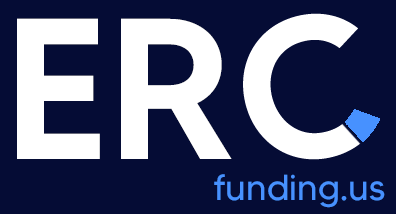
Due to the Federal Reserve’s practice of quantitative easing, demand and the overall outlook of the economy has been much harder to gague. Treasury bonds are no longer the market bellwether. See the following article from Money Morning for more on this.
Divining the direction of interest rates used to be a lot easier.
With the Federal Funds Rate, policymakers at the U.S. Federal Reserve would indicate precisely what they wanted the overnight lending rate between big banks to be. And the prices of U.S. Treasury securities of all maturities fell in line like obedient soldiers.
But things have changed.
Forget about watching the Fed Funds Rate now. That central bank benchmark has ranged between 0.00% and 0.25% for a couple of years now. Going forward, i t’s not going to be an indicator of interest-rate movement, because it’s not going to change much.
Sure the Fed wants it there. But more to the point, the Fed Funds Rate remains in that range because all the too-big-to-fail (TBTF) banks like Citigroup Inc. (NYSE: C) and Bank of America Corp. (NYSE: BAC) are far bigger now, are lending less, and have huge excess reserves on which they’d love to earn an overnight profit. So for now and for the foreseeable future, they’ll be plenty to lend between giant "TBTF" club members.
And thanks to its "quantitative-easing" (QE) strategy, the Fed is essentially monetizing the U.S. Treasury’s debt by buying in the secondary market from primary dealers like Goldman Sachs Group Inc. (NYSE: GS) and JPMorgan Chase & Co. (NYSE: JPM) the equivalent of every new issue that comes to market.
The net result: There’s no real gauge of demand because the Federal Reserve has hijacked the free market.
The New Bellwether
Tens of trillions of dollars are invested in the U.S. bond markets.
And – for as long as anyone can remember – the Fed, U.S. Treasury bonds and the Treasury yield curve were the bellwethers of where interest rates were headed. That’s why investors watched those indicators so closely.
Claim up to $26,000 per W2 Employee
- Billions of dollars in funding available
- Funds are available to U.S. Businesses NOW
- This is not a loan. These tax credits do not need to be repaid
But they are bellwethers no more. With the $2.9 trillion market for municipal bonds now buffeted by pension, deficit, tax and potential state bankruptcy woes, it’s the direction of muniyields and shape of the muni yield curve that investors should be watching to divine the future direction of interest rates.
T o divine the direction of interest rates – and stay ahead of the curve – watch the muni-bond market by watching the iShares S&P National AMT-Free Muni Bond Exchange-Traded Fund (NYSE: MUB).
Private investors – mostly individuals and insurance companies – hold about 95% of the $2. 9 trillion worth of municipal bonds currently outstanding.
Because it’s essentially individual-investor demand that determines what yields states and municipalities must offer on their bonds in order to attract investors, pure supply-and-demand realities in the municipal arena make interest-rate movements much more transparent.
It’s possible that budget, deficit, and pension woes will get worked out sooner rather than later.
But it’s far more likely they won’t.
Either way, because the muni-bond market isn’t manipulated by the Fed or subject to extraordinary outside forces, demand in the face of available supply for new issues will result in true "price discovery."
A Look Ahead
The market has calmed down since it began to swoon last October. After selling off on talk about Chapter 9 reorganizations at state and local government levels – and after an onslaught of muni-mutual-fund selling – prices have stabilized along with yields.
But don’t be fooled. The only reason things are quiet on the muni-bond front is because there’s virtually no supply coming to market.
Only $29 billion worth of muni-bond offerings were floated in the last two months, compared to $46.5 billion in the first two months of 2010.
The rest of the year could get ugly.
The Build America Bonds program expired on Dec. 31, 2010. Under that issuer-and-buyer-friendly program, the U.S. government subsidized taxable issuance by states and municipalities to the tune of $117.3 billion. With that backstop gone, new issuance of an expected $275 billion to $300 billion this year will sorely test the public’s appetite for munis.
As new bond issues do come to market, the important thing to watch will be their maturities.
Issuers want to avoid offering variable-rate demand obligations (VRDOs) because they fear that if rates rise or their creditworthiness declines, they may not be able to roll over short-term borrowings. And the only way to borrow long-term in a rising-rate environment is to offer risk-averse investors higher coupons on bonds with extended maturities.
As the muni-yield curve steepens, investors will start interpreting that steepening as a reflection of increased risk. At the exact time that issuers are offering higher yields, such an interpretation by investors will force issuers to offer even higher yields and will cause the prices of old bonds to tank.
The purity of the supply-and-demand equation in the muni market – and its resulting reflection on interest-rate levels – is where the wheat will be separated from the chaff.
And that’s why – for now – i t’s the muni market that investors need to embrace as their new interest- rate bellwether.
This article was republished with permission by Money Morning.



